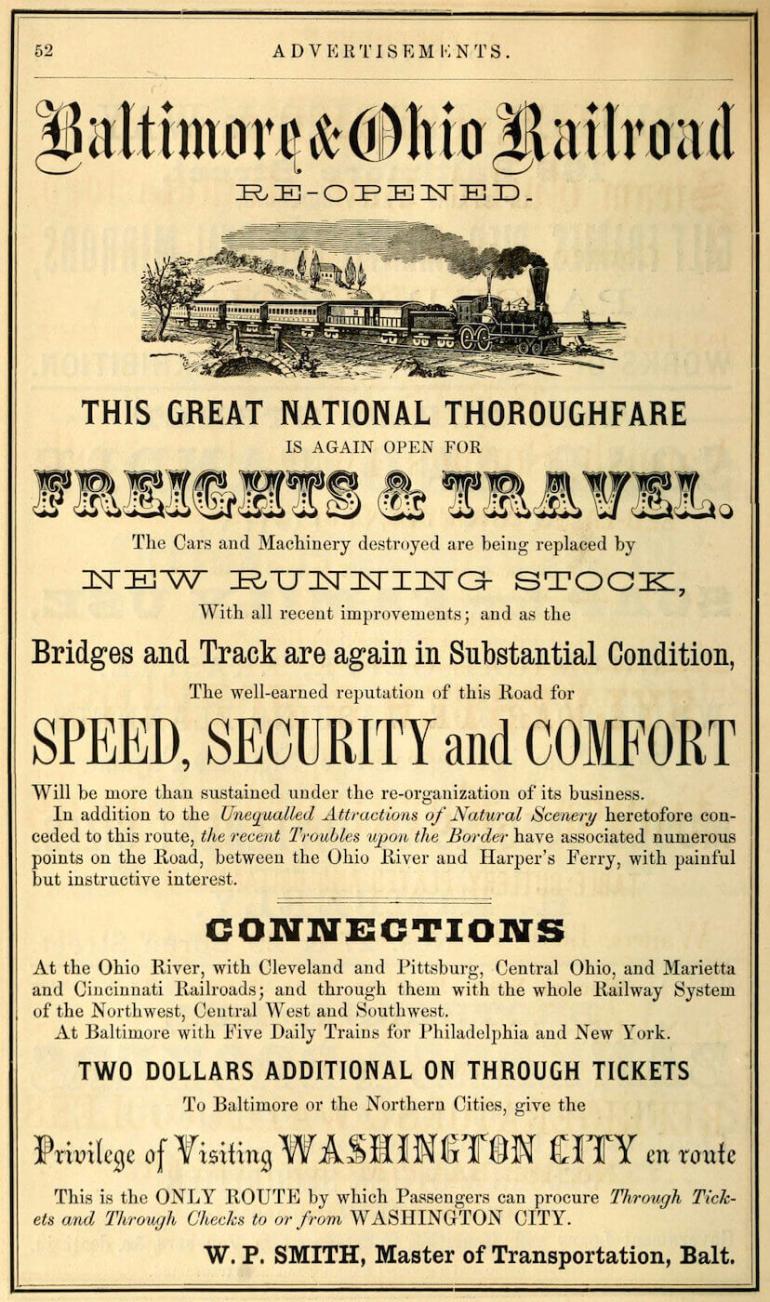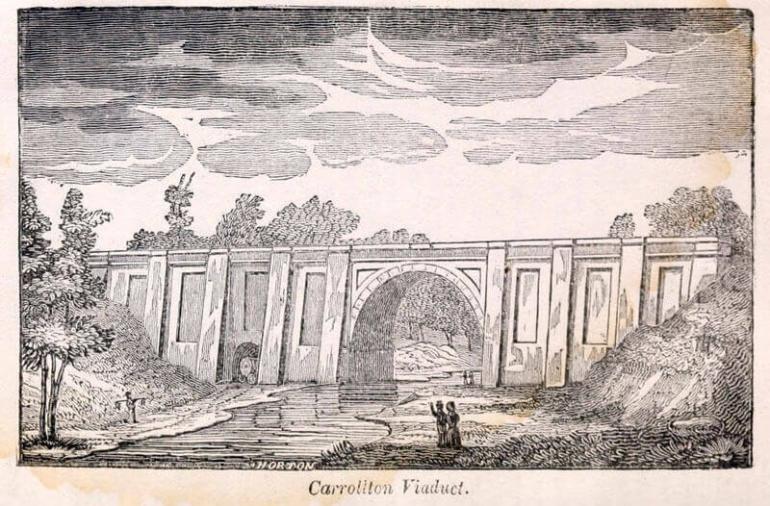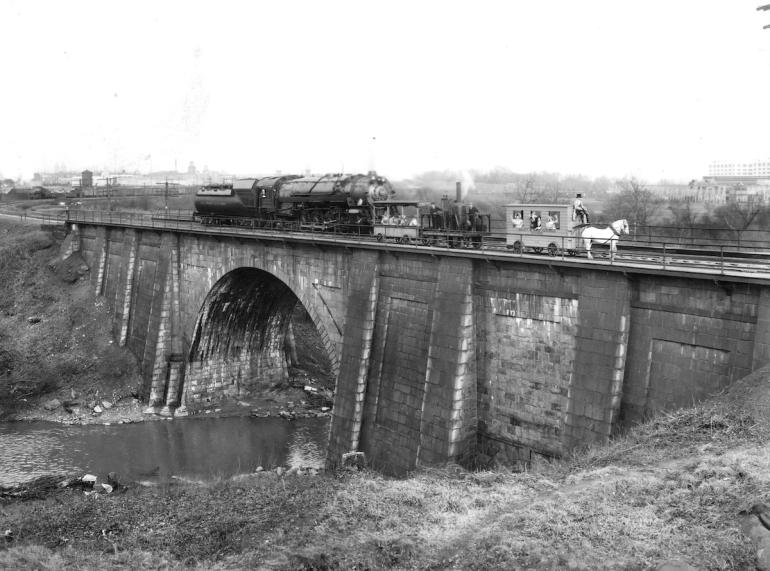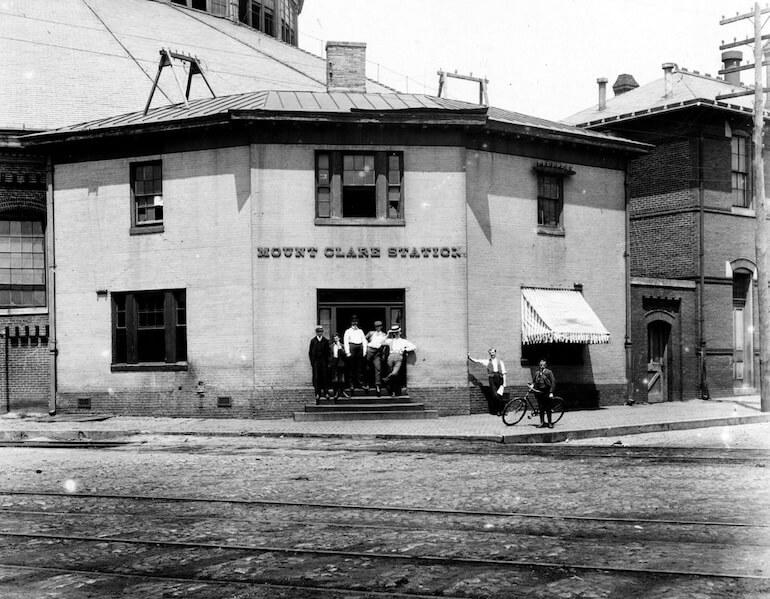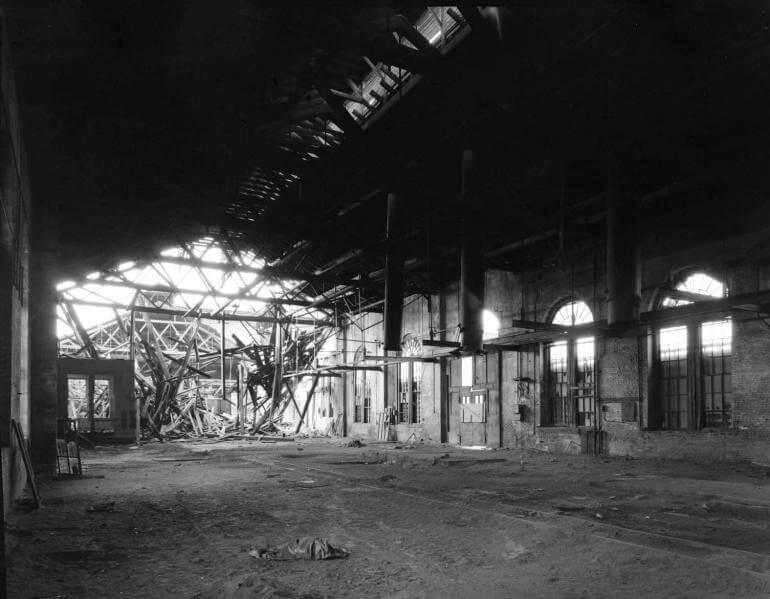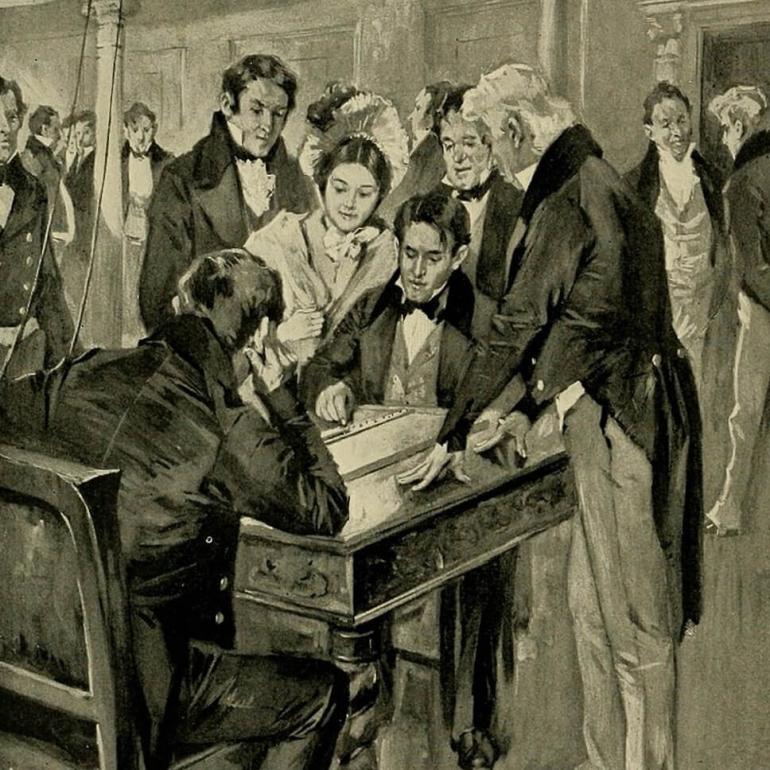Etching from an 1840 stock certificate showing the original steam locomotive, dubbed Tom Thumb. Public domain image.
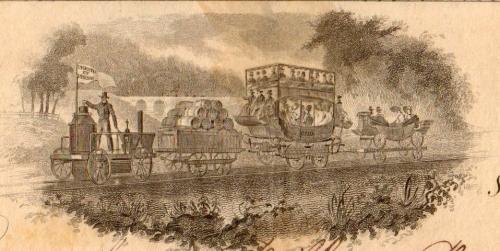
B&O Railroad
Fearing competition from the Erie Canal and the C&O Canal companies for moving goods to and from the Midwest, Baltimore business leaders invested in a new technology called the “railroad” in 1827, becoming the first city in America to offer this new type of transportation. Initially, horses pulled railcars, but the B&O quickly introduced steam locomotives that replaced the animals.
In 1828, James Maccubbin Carroll donated 10 acres from the northeast corner of Mount Clare’s grounds to the B&O to build their first station and maintenance yard. He also gave them the right-of-way to construct the country’s first commercial passenger rail line across his land. The branch began with a 13-mile span to Ellicott Mills, now known as Ellicott City. James invested in the B&O and eventually served as a director for the company.
Carrollton Viaduct
The first masonry railroad bridge built in the U.S. was an engineering marvel as it proved the feasibility of building viaducts to carry railroads across wide, deep valleys. It spans Gwynns Falls stream near Georgia plantation (modern day Carroll Park) with an 80-foot wide arch. It was named for Charles Carroll of Carrollton, a director of the B&O, and the last living signer of the Declaration of Independence. He laid the cornerstone on July 4, 1828. The viaduct is one of the world’s oldest railroad bridges still in use today.
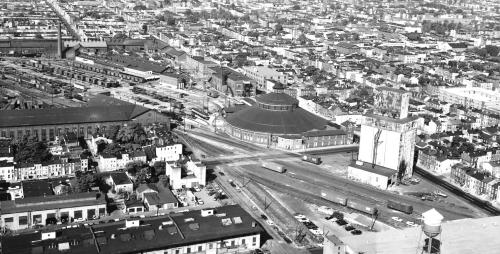
Aerial view of the Mount Clare Shops circa 1971. The Mount Clare Station is in front of the large circular building, known as the Roundhouse, seen at the center-right. Courtesy of the Library of Congress.
Mount Clare Shops
In 1830, the railroad purchased 15 additional acres from James Maccubbin Carroll to expand its maintenance facilities and passenger station, known initially as the West Pratt Street Depot. The complex was later renamed the Mount Clare Shops and Station.
At its height, the Mount Clare shops stretched more than 100 acres and included an ironworks, foundry, bridge fabrication shop, sawmill, and grain elevator. However, as America’s highway system and air travel infrastructure grew, passenger rail ridership fell sharply. By 1974, the B&O had closed and demolished much of the manufacturing facility. Forty acres of the original campus, including the historic Mount Clare Station built in 1851, are now part of the B&O Railroad Museum. After a series of mergers, B&O railroad became part of CSX Transportation in 1987.
First Telegraph
The B&O also played a significant role in the development of long distance communication by participating in the country’s first public demonstration of the telegraph. On May 24, 1844, Samuel Morse transmitted a message 44 miles from Washington, D.C. to Baltimore. It was sent from the Supreme Court Chamber in the basement of the U.S. Capitol to the West Pratt Street Station using wires strung along the B&O tracks. The message “What hath God wrought!” was a biblical reference (Numbers 23:23) suggested by Annie Ellsworth, the daughter of a friend.

